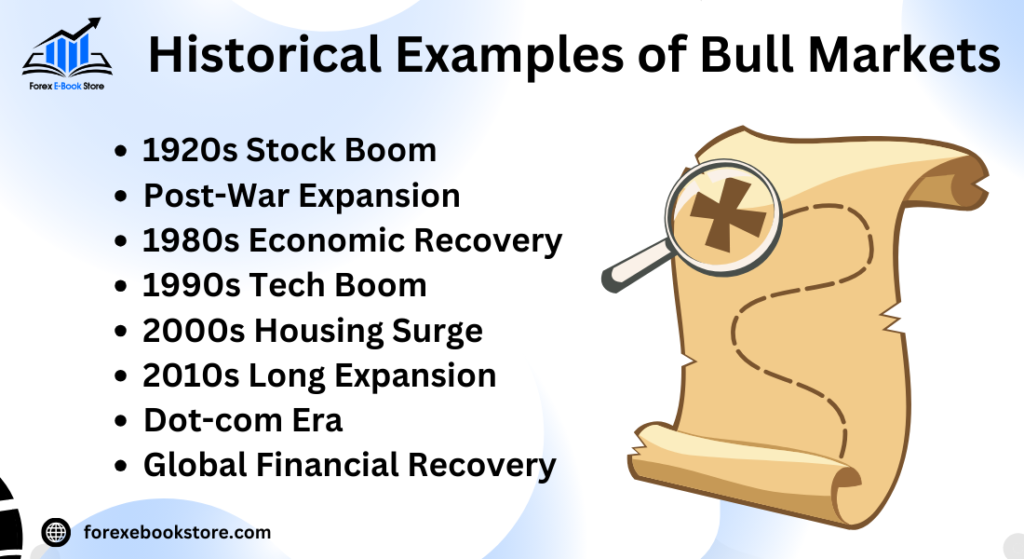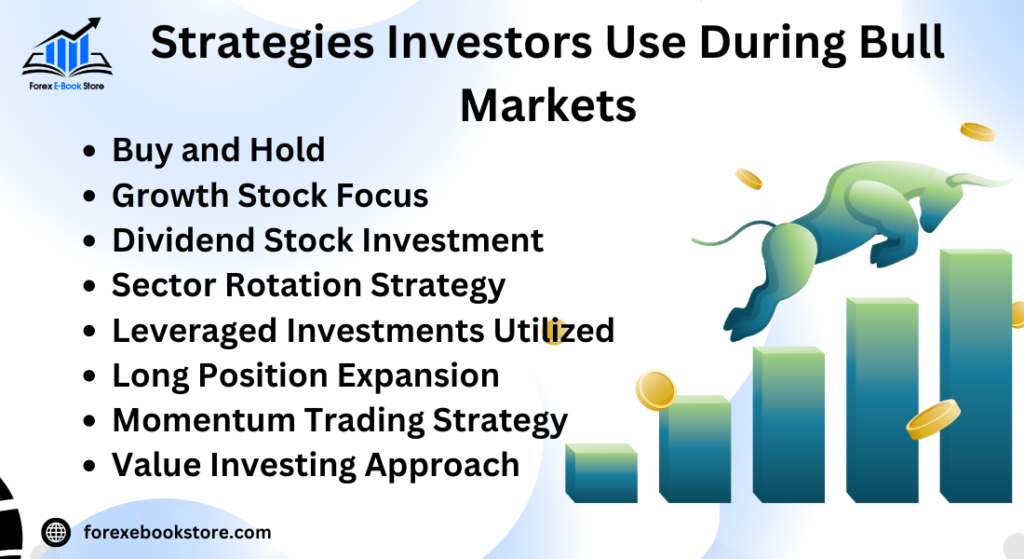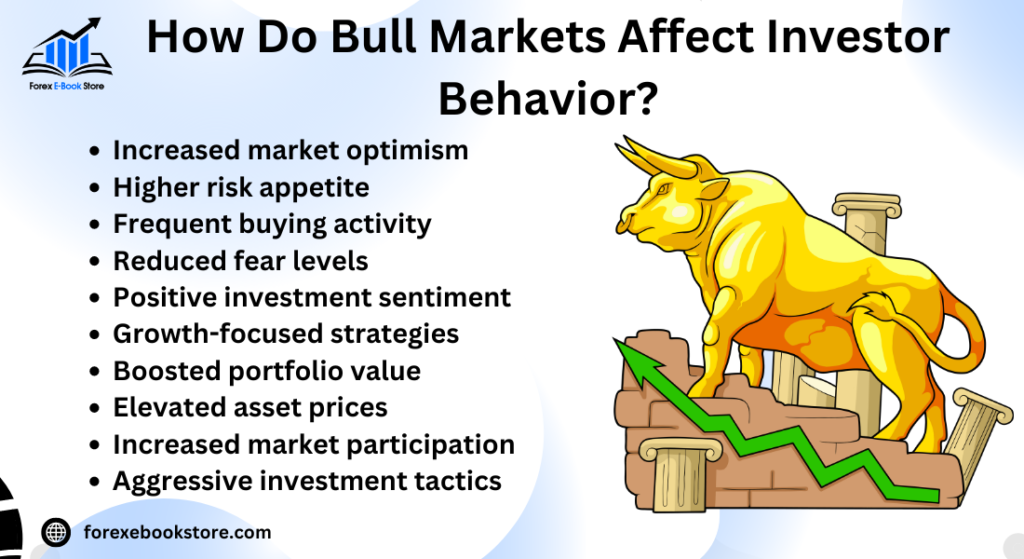A bull market is a prolonged period during which investment prices rise faster than their historical average, characterized by widespread optimism and increasing investor confidence. Typically associated with economic expansion, this market sees the value of stocks, bonds, or other assets rise, reflecting positive investor sentiment and robust economic indicators like low unemployment and increasing GDP. As prices surge, individual and institutional investors are encouraged to invest more capital, fuelling the upward trend.
Understanding this markets is crucial for investors looking to maximize gains and navigate potential risks. Investor sentiment plays a pivotal role during these periods, as confidence in future performance leads to increased buying activity and higher trading volumes. Historical examples, such as the Roaring Twenties and the Dotcom Boom, demonstrate how technological advancements and economic growth can drive this markets, offering valuable lessons for contemporary market participants.
Table of Contents
What Defines a Bull Market?
A bull market is a period marked by a sustained increase in the prices of stocks, bonds, or other assets, typically defined by a rise of 20% or more from recent lows. This optimistic phase in the financial markets is driven by a combination of factors, including strong economic fundamentals, positive investor sentiment, and favorable monetary policies. During this, investor confidence is high, leading to increased buying activity and higher trading volumes. This investor enthusiasm propels asset prices upward, creating a self-fulfilling cycle of rising values and increased market participation.
Key characteristics of a bull market include rising stock prices that often surpass previous record highs and increased liquidity as more investors buy and hold securities in anticipation of further gains. During a bull market, the market environment is characterized by optimism and positive sentiment, with economic indicators such as GDP growth, low unemployment, and robust corporate earnings supporting the upward trend. As companies experience higher valuations and improved profitability are more likely to expand, hire more employees, and invest in new technologies, contributing to overall economic growth.
Another defining feature of a bull market is the reduction in supply relative to demand for securities. As prices rise, investors are less inclined to sell their holdings, preferring to hold on to their investments to maximize potential gains. This scarcity of available assets further drives prices up, reinforcing the bullish trend. It can vary in duration, often lasting several months to several years, and are typically punctuated by short-term corrections or pullbacks, which can provide buying opportunities for astute investors.
What Causes a Bull Market to Start?
Bull market are triggered by economic, political, and psychological factors that create a favorable environment for rising asset prices. One of the primary drivers of a bull market is economic growth, often supported by low interest rates, controlled inflation, and strong corporate earnings. When these conditions are present, investors are more likely to have confidence in the market’s future performance, leading to increased investment activity and higher asset valuations.
Government policies and fiscal measures can also significantly contribute to initiating it . For instance, tax cuts, deregulation, or increased government spending can stimulate economic activity and boost investor confidence. Similarly, central banks may implement expansionary monetary policies, such as lowering interest rates or engaging in quantitative easing, to encourage borrowing and investment. These measures can enhance liquidity in the market and support rising asset prices.
Investor psychology is another critical factor in the onset of a bull market. As investors become more optimistic about the economic outlook, they are more willing to take risks and invest in stocks, bonds, and other assets. Media coverage, analyst forecasts, and historical performance trends can fuel this positive sentiment, creating a momentum that drives prices higher. Once a this market gains traction, the cycle of optimism and rising prices can be self-reinforcing, drawing in more investors and amplifying the upward trend.
What Are the Historical Examples of Bull Markets?

Throughout history, several notable bull markets have significantly impacted the financial world. One of the most famous of this markets occurred during the 1920s, often called the “Roaring Twenties.” This period was characterized by rapid industrialization, technological advancements, and significant economic growth, leading to a surge in stock prices. The bull market of the 1920s ultimately ended with the stock market crash of 1929, which ushered in the Great Depression.
Another prominent example is the dot-com boom of the late 1990s, driven by the rapid rise of internet-based companies. During this period, the NASDAQ index soared as investors poured money into tech stocks, hoping to capitalize on the digital revolution. However, the speculative bubble burst in the early 2000s, leading to significant market corrections and financial losses for many investors.
The post-2008 financial crisis bull market, which began in March 2009 and lasted until February 2020, is the longest in history. This period saw significant gains across major indices, such as the S&P 500, driven by low interest rates, quantitative easing measures, and recovering corporate earnings. It ended abruptly with the onset of the COVID-19 pandemic, which caused widespread market volatility and economic uncertainty.
What Are the Different Types of Bull Markets?
Bull markets can be classified into several types based on their duration, the assets involved, and the underlying economic conditions. Understanding these types helps investors navigate different market environments and make informed investment decisions.
- Secular Bull Markets: A secular bull market is characterized by a long-term upward price trend that can last several years to decades. Significant structural economic changes, such as technological advancements or demographic trends, often drive these markets. During a secular this market, the overall economic environment remains favorable, with consistent growth in GDP, low unemployment, and rising corporate earnings. These markets may experience short-term corrections, but the long-term trend remains positive. The bull market from 1982 to 2000, driven by technological innovations and economic expansion, is a classic example.
- Cyclical Bull Markets: Cyclical bull markets are shorter-term market phases within a more significant secular trend. They typically last a few months to several years and are influenced by the business cycle, including fluctuations in economic growth and interest rates. These bull markets often coincide with periods of economic recovery following a recession, where investor confidence and consumer spending rise. The 2009 to 2020 bull market that followed the financial crisis of 2008 is an example of a cyclical bull market that existed within a broader secular trend.
- Asset-Specific Bull Markets: Bull markets can also occur in specific asset classes, such as stocks, bonds, commodities, and real estate. For instance, a stock bull market is marked by rising prices across significant stock indices like the S&P 500, driven by economic growth and positive investor sentiment. In contrast, a bond bull market might occur when interest rates fall, leading to higher bond prices. As investors seek safe-haven assets, gold and other commodities can experience bull markets during economic uncertainty or inflation. Various factors, including changes in interest rates, geopolitical events, and shifts in supply and demand, can influence these asset-specific bull markets.
What Is the Impact of a Bull Market on the Economy?
Bull markets significantly impact the economy, primarily through increased consumer confidence and spending. As stock prices rise, investors experience an increase in wealth, known as the “wealth effect,” which encourages them to spend more. This uptick in consumer spending boosts economic growth by increasing demand for goods and services. As businesses respond to higher demand by expanding their operations, hiring more employees, and investing in new projects, the overall economic environment becomes more robust, contributing to further economic expansion.
During a bull market, the job market also tends to strengthen. As companies grow and seek to capitalize on favorable economic conditions, they hire more workers, reducing unemployment rates. This increased employment leads to higher household disposable incomes, fueling further consumer spending. Additionally, wages often rise as companies compete for talent, enhancing many individuals’ living standards. This cycle of growth and investment creates a positive feedback loop, where improved economic indicators support the continuation of the bull market.
However, it’s important to note that bull markets can also lead to certain risks, such as inflation and asset bubbles. As consumer demand and corporate spending increase, prices for goods and services can rise, potentially leading to inflationary pressures. Moreover, if asset prices rise too quickly or become overvalued relative to their intrinsic worth, it can result in speculative bubbles. These bubbles pose a risk to economic stability, as they may eventually burst, leading to sharp market corrections and potential economic downturns.
What Strategies Do Investors Use During Bull Markets?

Investors employ various strategies to capitalize on the opportunities presented by bull markets. One of the most common approaches is the “buy and hold” strategy, where investors purchase stocks or other securities to hold them for an extended period. This strategy is based on the belief that asset prices will continue to rise over time, allowing investors to benefit from long-term capital gains. The optimism and positive sentiment that characterize bull markets often support this approach, as investors expect future price increases.
Another strategy used during bull markets is “dollar-cost averaging,” which involves investing a fixed amount of money at regular intervals, regardless of market conditions. This approach allows investors to purchase more shares when prices are low and fewer when prices are high, potentially reducing the average cost of their investments over time. By maintaining a consistent investment schedule, investors can mitigate the impact of market volatility and benefit from the long-term upward trend in asset prices.
Some investors also engage in “sector rotation” during bull markets, shifting their investments toward industries or sectors expected to outperform in the current economic environment. For example, cyclical sectors such as technology, consumer discretionary, and industrials may offer attractive opportunities during periods of economic expansion. By identifying and investing in these high-growth sectors, investors can enhance their returns and take advantage of the favorable conditions present in a bull market.
How Long Do Bull Markets Typically Last?
Bull markets can vary significantly, often lasting from several months to several years. Historically, the average length of a bull market is approximately 3.8 years, though some have lasted much longer. For example, the post-2008 financial crisis it, which began in March 2009 and ended in February 2020, is the longest on record, spanning nearly 11 years. This period of sustained growth was supported by factors such as low interest rates, quantitative easing measures, and recovering corporate earnings.
Economic, political, and psychological factors influence a bull market’s longevity. Strong economic fundamentals, such as rising GDP, low unemployment, and robust corporate profits, can support its continuation. Additionally, positive investor sentiment and confidence in the market’s future performance are crucial in sustaining the upward trend in asset prices.
However, it’s essential to recognize that bull markets do not last indefinitely. They often end when external factors, such as economic shocks, geopolitical events, or changes in monetary policy, lead to a shift in investor sentiment and a subsequent decline in asset prices. While predicting the exact timing of a market transition can be challenging, understanding the factors contributing to this markets can help investors make informed decisions and prepare for potential changes in market conditions.
What Are the Risks Associated With Bull Markets?
While bull markets offer significant profit opportunities, they also come with inherent risks that investors must consider. One of the primary risks is market volatility, where prices fluctuate rapidly despite the overall upward trend. Even in this market, periods of corrections or sharp declines can catch investors off guard. These short-term fluctuations can lead to emotional decision-making, prompting investors to buy or sell based on fear rather than strategy.
Another notable risk during bull markets is overvaluation. As stock prices rise, they can become detached from their intrinsic values, leading to inflated valuations. This can create a bubble, where speculation drives asset prices more than fundamentals. When these bubbles burst, they often lead to significant market corrections and potential losses for investors who have bought in at elevated prices. Investors should be cautious and conduct thorough analysis before investing in overvalued stocks.
Herd mentality is another risk, where the fear of missing out (FOMO) drives investors to make impulsive decisions without proper due diligence. This can lead to poor investment choices, as individuals may follow the crowd into investments that are not well-researched or aligned with their financial goals. To mitigate these risks, investors should maintain a diversified portfolio, conduct regular reviews, and adhere to a disciplined investment strategy.
How Can Investors Maximize Gains in a Bull Market?
Investors can maximize their gains during a bull market by employing several strategic approaches. One effective method is the buy-and-hold strategy, where investors purchase quality stocks and hold them long-term. This approach allows investors to benefit from the overall upward trend in the market and capitalize on long-term capital gains. By maintaining a long-term perspective, investors can avoid the pitfalls of short-term market volatility.
Another strategy is dollar-cost averaging, which involves investing a fixed amount of money at regular intervals, regardless of market conditions. This approach helps investors accumulate shares over time and reduces the impact of market fluctuations. By consistently investing, investors can purchase more shares when prices are low and fewer when prices are high, potentially enhancing their long-term returns.
Sector rotation is another tactic in which investors shift their focus toward industries expected to perform well in a bull market, such as technology, healthcare, and consumer discretionary sectors. Investors can position themselves to capture higher returns by identifying sectors with solid growth potential. Thorough research and analysis are essential to identifying promising industries and companies with solid fundamentals.
How Do Bull Markets Affect Investor Behavior?

Bull markets significantly influence investor behavior by boosting confidence and increasing risk appetite. During these periods, investors often become more optimistic about future market prospects, which leads to increased buying activity and a willingness to take on more risk. Rising asset prices, positive economic indicators, and favorable market conditionsfuel this confidence.
The wealth effect is another way it impact investor behavior. As stock portfolios appreciate, investors feel wealthier and are more likely to spend and invest additional capital. Increased consumer spending contributes to economic growth and reinforces positive market sentiment. However, this confidence can sometimes lead to complacency, where investors may overlook potential risks and fail to diversify their portfolios adequately.
Additionally, bull markets can encourage speculative behavior, where investors chase high-risk investments in pursuit of quick profits. This behavior is often driven by the fear of missing out (FOMO) and can result in poor investment decisions. To counteract this tendency, investors should maintain a disciplined approach, focusing on long-term goals and sound investment principles to navigate these markets successfully.
Conclusion
In conclusion, understanding a bull market is essential for investors aiming to capitalize on rising asset prices and economic growth. By recognizing the stages of it and the psychological factors that drive investor behavior, individuals can develop strategies to maximize returns while managing risks effectively. These markets present opportunities for substantial financial gains but also require careful analysis and disciplined decision-making to navigate potential challenges.
Moreover, a crucial aspect of navigating financial markets is understanding the “Ask Price,” which is vital in determining buying and selling decisions. The asking price represents the lowest price a seller is willing to accept for security and is a critical component of the bid-ask spread. Knowledge of the asking price and other market indicators helps investors make informed choices about when to enter or exit positions, optimizing their investment strategies during both bull and bear markets.










